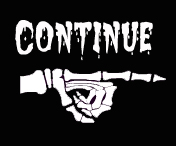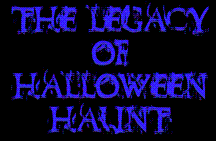

INTERVIEW - PART II
In our Part I of our interview with Knott's Scary Farm Halloween Haunt Maze Designer, Daniel Miller, we learned a bit about his background, some of his inspirations on the work he does for Knott's Berry Farm as well as what it takes to create a Halloween Haunt maze. In Part II of Daniel's interview, we are going to investigate some of the psychology behind designing a Halloween Haunt maze and Daniel will also be answering some questions that visitors of Ultimatehaunt.com have asked through the years. Let's get right into it:
H.P. Lovecraft: “The oldest and strongest emotion of mankind is fear”
John Carpenter: “We’re all afraid of the same things. That’s why horror is such a powerful genre”
Stephen King (as written in his book: Danse Macabre): “If there is any truth to the Danse Macabre, it is simply that novels, movies, t.v. and radio programs-even the comic books [and for the purposes of today’s interview, we believe that haunted attractions fall under this category as well]- dealing with horror always do their work on two levels:
On top is the gross out level. The gross out can be done with varying degrees of artistic finesse, but it’s always there.
On another more potent level, the work of horror is really a dance-a moving rhythmic search.
Is horror art? On this second level the work of horror can be nothing else; it achieves the level of art because it is looking for something beyond art, something that predates art; it is looking for what I would call phobic pressure points. The good horror tale will dance its way to the center of your life and find the secret door to the room you believe no one but you knew of.”
Do you agree with what Stephen King says? Why or why not?
Absolutely! There is definitely
an art to horror and it should get inside your soul and freak you out.
Essentially, I understand what he’s saying. There are the “boo-shock-gore”
scares, which I think we do quite well. I think we try, through our themes,
to achieve a type of eeriness. You walk away from it and ask, “What
the heck just happened? Why am I still thinking about that? Why is this
still affecting me days afterward?”
That is the ultimate prize. What we want to do is not just pop-out and scare you. That’s a decent boo-shock affect. However, as a designer, it’s our true goal to have someone walk through the maze and remember it after weeks have passed and still be freaked out by it.
An example…..what
I remember kind of being freaked out by is this:
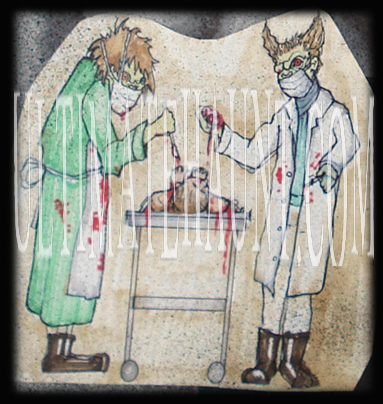 |
Asylum, the first year, was on the Stage Coach Lawn. I kind of put my heart into that sucker. I was like “wow! This is what I want to see in the future for our mazes”. But this was something that I put out there and it even freaked me out working on it and seeing this stuff.
I was gauging the guest
reactions as they would come out of the maze. But, they were quiet. I
remember wondering if people hated it and thinking that I had a huge stinker
on my hands! I talked to a friend of mine and asked what the problem was
and if people didn’t like it. My friend said, “No….they’re
just freaked out”. They didn’t know how to react".
Then later I went to
the Ultimatehaunt.com message boards and people were like, “That
was incredible!” I kind of really touched a nerve. People usually
come out of mazes laughing and smiling. But there was just silence coming
out of that maze! It was like they had just seen "Schindler’s
List"!
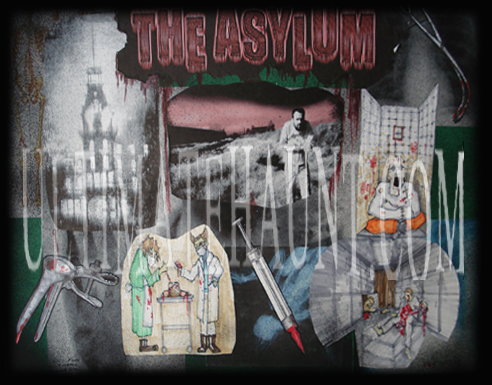
How much weight do you carry on backstory/storyline for the particular themes?
We’re given quite a bit of freedom, to create our own storyline. There are things that we have to put in, for example, the Grudge 2, had to be a particular storyline because it already existed. But even then, we added a bit….we created an eyeball room that was not in the movies and it ended up being one of the more affective scare areas.
We create pretty detailed scripts. We do the ground plan and the script at the same time. We tend to write a lot of backstory for a lot of these themes. We need to know that information in the back of our minds.
You can tell when someone throws a maze together and it’s not from the heart and has no backstory. The designers often call it “Haunt Stew” A maze with one room after another with different themes that often don’t mesh. It’s like throwing Freddy and Jason into the same maze….but even those have some sort of back story because they’re from the movies.
When we do something original, like 13 Axe Murder Manor, which
was designed by Todd Faux and Dustin Schofield, we need to create a Lizzy
Bordon backstory to help us.
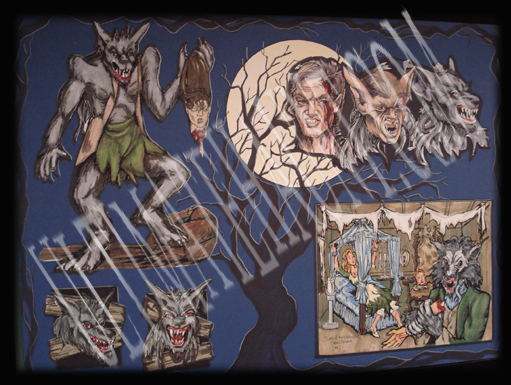
To me, it’s great. I have tried in the past and there have been points when we have succeeded, to give the backstory in the line.
For example, in Malice, we made these poems that described four scenes. We made incredible posters of original art that we printed out and put up on the outside maze walls. It was a last minute thing, but I put a lot of time into them. We stapled them up outside of the maze and they were torn down the first night.
That was an attempt to show the backstory in the queue to show what you can do to have hype before you even get into the maze.
For the Asylum, I even went as far as to thinking about creating a Flash-based website dedicated to a build up for the maze. It was lot of work to try and do that, but in the end we didn’t have the time. In my mind, it was going to be big, but again, we didn't have the time.
The best thing that we
can do for the build up as designers is to create a really cool graphic
for the entrance of the maze.
